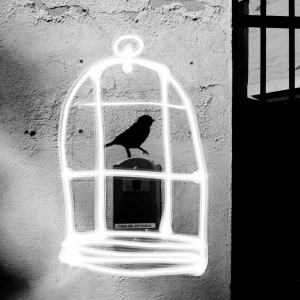Want to fix a problem? The first step is to name it.
August 15, 2017
Originally posted at Elizabeth Anne Wood Consulting
Therapists commonly tell their clients that you need to name a problem before you can fix it, and this is just as true for social change as it is for individual change. Still, discussions about white supremacy often make we who understand ourselves as white uncomfortable. We often avoid that language, describing individual circumstances or problems without naming the system that causes them. This is even true among well-intentioned, left-leaning, progressive whites who believe deeply in human rights and who, to greater and lesser degrees, fight against racism. They may feel attacked when a term they associate with neo-Nazis is used in a way that sounds like it might implicate them. The term feels divisive and alienating, and makes it hard for them to continue conversations that are focused on dismantling a system of practices that frequently benefits them even while they, themselves, may be fighting for social justice.
I’m thinking about this all the more since yesterday, after Heather Heyer was killed and many were injured by a white supremacist in Charlottesville, VA. Heyer was part of a crowd of demonstrators protesting a group of white supremacists. The white supremacists were themselves protesting the removal of a statue of Robert E Lee, a man who fought to keep slavery in place, and who, like every confederate general, could better be understood as a traitor to the United States and not as someone to be honored with statues in US town squares and names on US military bases.
It’s easy for a majority of white people in the US to point to neo-Nazis and racist skinheads and use the term “white supremacist” to describe them. That’s why it’s jarring to hear the term “white supremacy” used to describe a system of power and oppression instead of a person.* The system doesn’t look like the neo-Nazis. It looks like all the taken-for-granted patterns in our society that benefit those who are understood to be white over others, or that oppress those who are not understood to be white. It looks like the dominant culture and institutions supported, frequently unthinkingly but sometimes consciously, by many of us who are understood as white. And we don’t think of ourselves as anything like the skinheads.
That’s exactly why we need to call the system what it is, though. We won’t see it for what it is unless we call it what it is. If we don’t name the system, all we can do is talk about individual pieces. Marilyn Frye, in an essay called “Oppression,” from her book The Politics of Reality (1983), pointed out that if you look at a bird cage and you focus only on a single wire, you will never understand why the bird isn’t free. If you see two wires, even if you see how they cross, you still won’t see why the bird can’t just fly around. You need to see the cage. If we see the cage, we need a name for it.
In the United States, the best name for the entire cage is “white supremacist capitalist patriarchy,” a term I first learned from reading Feminist Theory: From Margin to Center (1984), by bell hooks, when I was in college. Michael Eric Dyson in yesterday’s New York Times narrows the focus a bit and calls it the bigotocracy.
To understand why it’s important to see the whole system, take an issue like police brutality, something that’s been the focus of much deserved attention for several years now. If we want to address police brutality, we can’t look at individual cops as “bad apples,” or even at an individual police force. We need to see the connections between the militarization of the police, the over-policing of Black, Latino, and Asian neighborhoods, the so-called war on drugs, and the constitution’s support for slavery via incarceration. If we want to understand why people who are understood as white are less likely to live in those neighborhoods, we need to understand that for centuries Blacks were prohibited from owning property (because they were deemed property and not human), and thus people who are understood to be white have had hundreds of years head start consolidating and passing on property from generation to generation. We need to understand white flight, redlining, racial steering, and the educational inequality that is grounded in that residential segregation and a school funding system based on local property values.
This is a system that benefits whites and is based on the idea that those with wealth and property are smarter, work harder, and are more deserving than others. The fact that most of us are taught in elementary school – no matter what neighborhood we grow up in – that in the US anyone who works hard to get ahead (meritocracy) is essentially white supremacy in action because it is an ideology that prevents children from learning about the way that the system privileges whites while oppressing everyone else. When parents in highly-rated well-off mostly-white school districts resist merging with under-resourced schools, they are thinking not of white supremacy, but of their children’s individual futures. Still, they are participating in white supremacy. When white college applicants protest affirmative action because they lose out on an admissions slot to a preferred school, they are not thinking of white supremacy but of their own individual futures. Still, they are participating in white supremacy. When neighbors sell houses because people of color begin to buy houses in the area, they are thinking of the value of the wealth they have tied up in their homes and not of white supremacy. Still, they are participating in white supremacy.
If we are going to fix this we need to see the whole system, call it what it is, and be willing to educate ourselves about how it works. Many whites do this work, but more of us need to, and we can’t let the discomfort of it stop us. We also need to support each other in the process. Loretta Ross, a longtime women’s rights, civil rights, and reproductive justice advocate who spoke at Woodhull’s Sexual Freedom Summit last week, reminded whites that white supremacy can kill our souls, too, and that if we care about human rights, we need to work to dismantle it not just to save people of color, but also to save ourselves. Willingly benefiting from the oppression of others erodes our own humanity.
What can we do if we want to work at dismantling white supremacy? To return to my example of the connection between housing, wealth, and education, we can demand a new funding structure for our schools so that their resources are no longer linked to the property values of their surrounding communities. We can demand the integrating of truly affordable housing into communities where the wealthy live so that we don’t have class-segregated, and thus racially-segregated communities and schools. We can at the very least acknowledge that we are benefiting from a system that is unjust, and we can sit with the discomfort that causes us when people call it by its name. Then we can learn more about how it works so that we can help those who are working to take it apart. Those of us who are progressive, who support human rights and social justice, might need to become uncomfortable enough to take actions more radical than we’re used to.
*For what it’s worth, if the confusion is just too much, I’d much rather rename the white supremacists “super-racist assholes” and save the term “white supremacy” for the system than concede the term as an individual label and be unable to call the system what it is. But, I don’t think that’s necessary. Most of us can grasp that Democrats are people who belong to a party, where democracy is a system that involves many other kinds of people. Most of us can grasp that we participate in capitalism even if we are not, ourselves, capitalists. I have faith that we can begin to understand that we are inevitably participating in white supremacy even if we are not white supremacists.
~~~
“big bird in a small cage” by Elia Scudiero is licensed under CC BY 2.0

